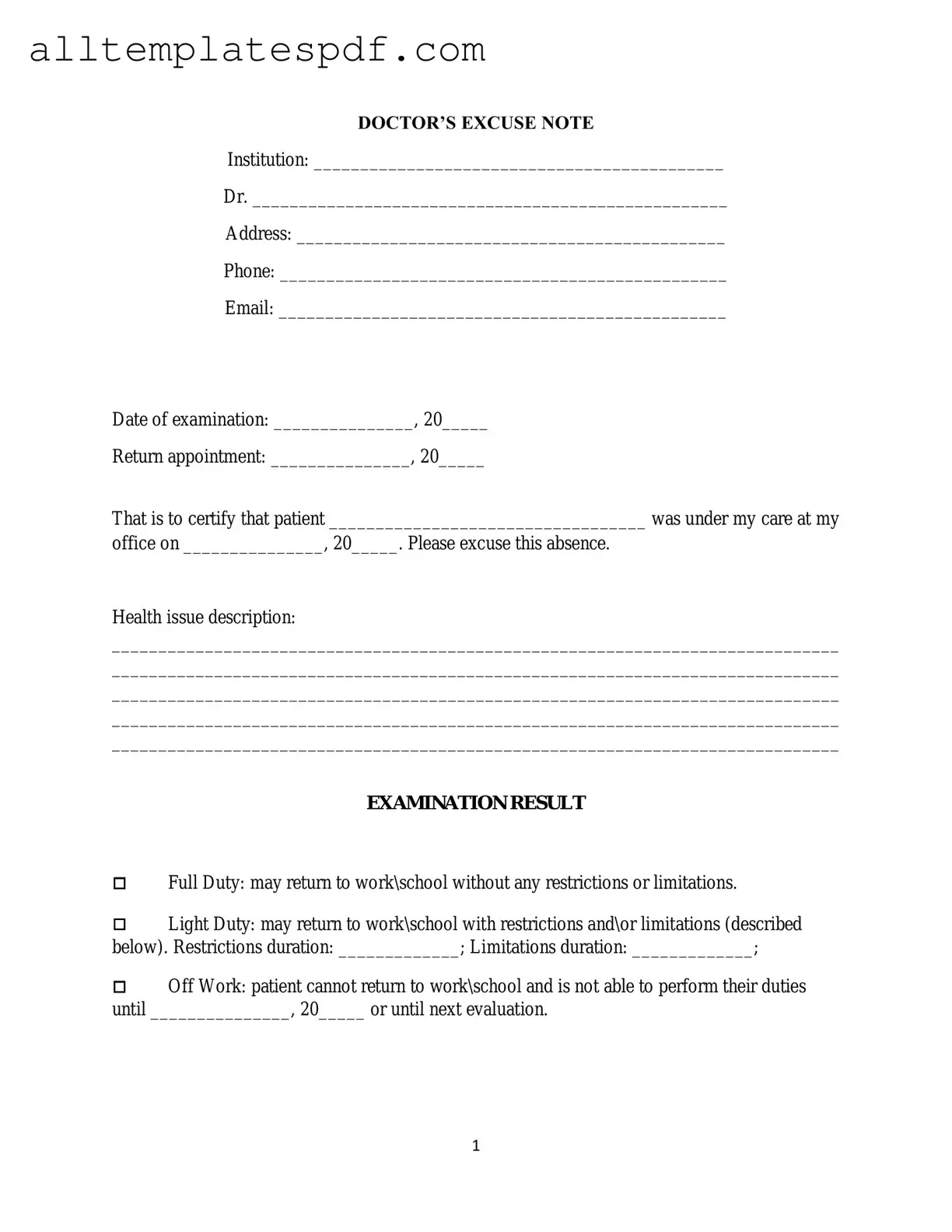Filling out a Doctor's Excuse Note form can seem straightforward, but many people make common mistakes that can lead to complications. One frequent error is not providing complete information. It's essential to include all required details, such as the patient's name, date of the appointment, and the doctor's signature. Omitting any of these elements can render the note invalid.
Another mistake is using unclear handwriting. If the form is hard to read, it may cause confusion. Always print clearly or type the information when possible. This ensures that anyone reading the note understands the details without any issues.
Some individuals forget to check the date. The date of the appointment or the date the note is issued is crucial. If it's missing or incorrect, it can lead to misunderstandings about the validity of the excuse.
In addition, people often overlook the importance of including specific medical reasons for the absence. While privacy is important, a brief explanation can help clarify the situation. Without this, employers may question the legitimacy of the excuse.
Another common error is not following the specific instructions provided by the employer or school. Each institution may have its own requirements for what needs to be included in a doctor's note. Ignoring these can result in the note being rejected.
Additionally, some people make the mistake of using an outdated form. Always check for the most current version of the Doctor's Excuse Note form. Using an old version may lead to discrepancies in the information required.
Failing to sign the form is another mistake. A doctor's signature is often necessary to validate the note. Without it, the document may not be taken seriously.
Inaccurate contact information for the doctor can also be problematic. Ensure that the doctor's phone number and address are correct. This allows the employer or school to verify the note if needed.
Lastly, some individuals do not keep a copy of the note for their records. Having a copy can be useful in case there are questions later. It’s always a good idea to maintain a record of important documents.
By avoiding these common mistakes, individuals can ensure that their Doctor's Excuse Note is clear, valid, and accepted without any issues.
